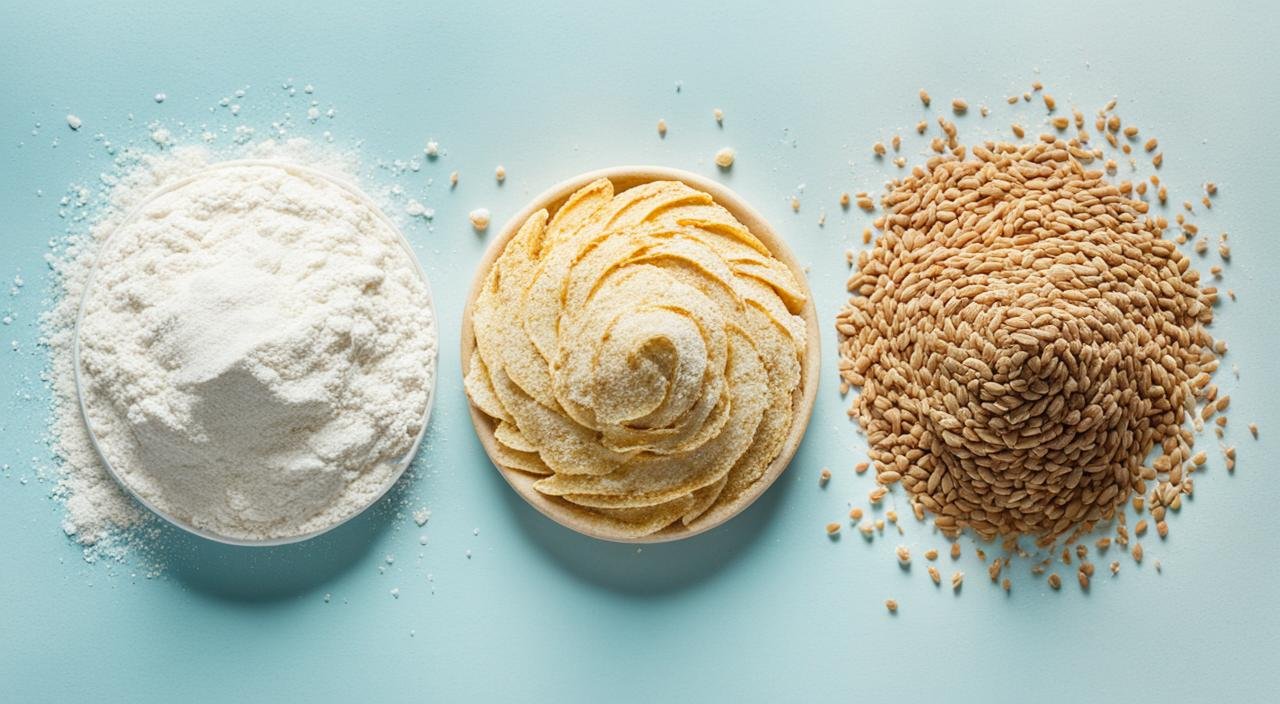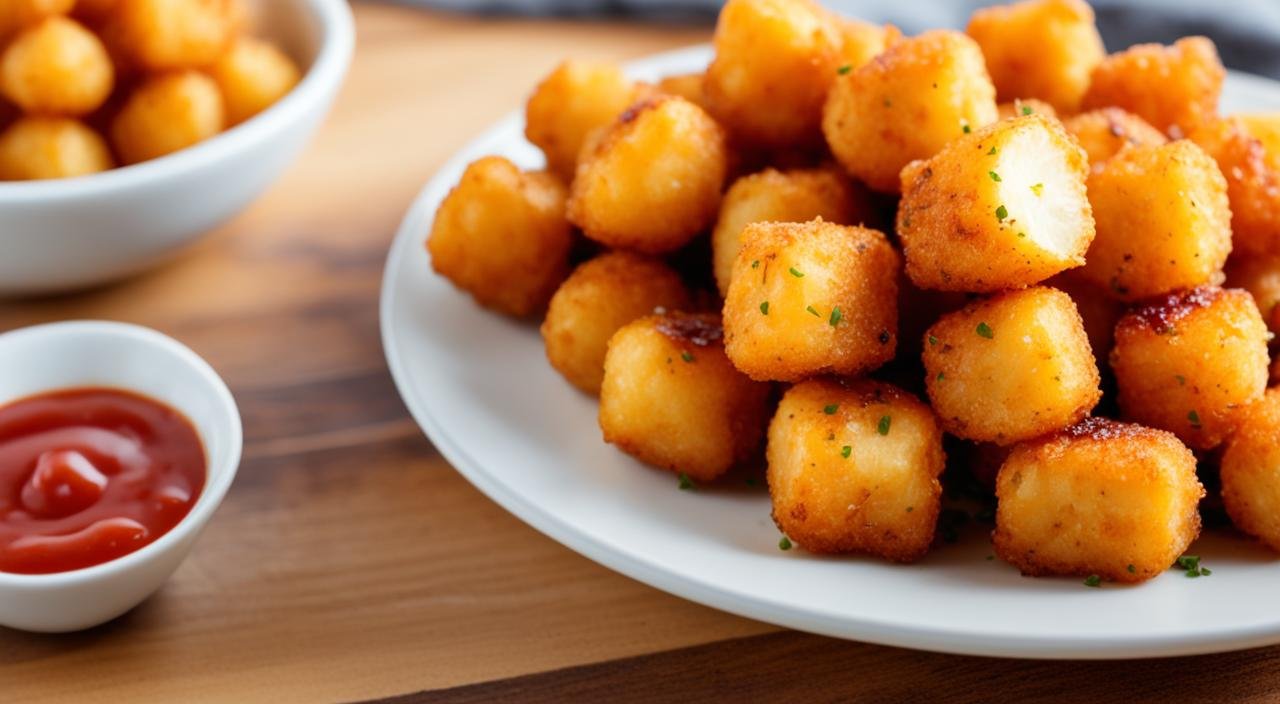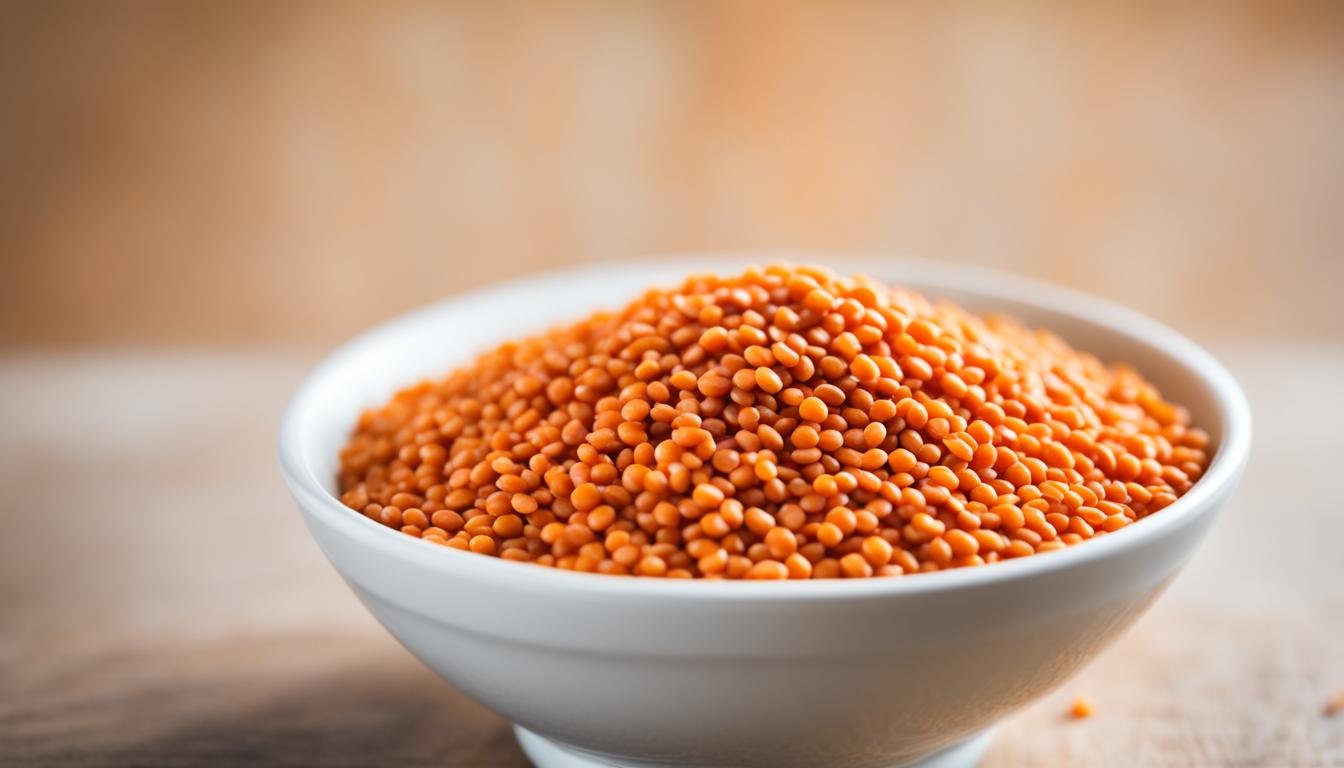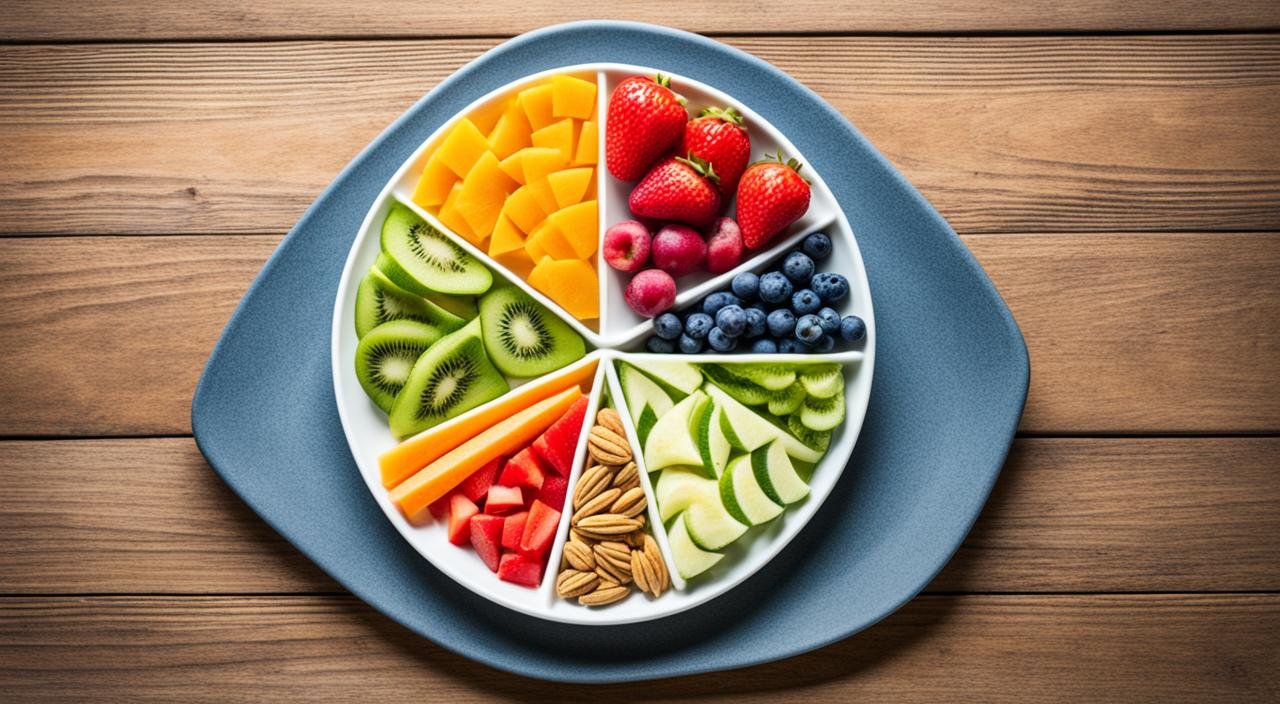Ever felt bad after eating pizza or pasta? Living with celiac disease? No sweat! Our guide makes it simple. Learn easy tricks for tasty meals, eating out, and feeling great. We’ve got your back on this gluten-free journey!
For many Americans, it could be celiac disease. This autoimmune disorder hurts the gut. It affects about 3 million people in the U.S., with more women getting it than men. We’re here to help you live well with celiac disease and eat gluten-free.
Celiac disease happens when you eat gluten, found in wheat, barley, and rye. It makes your immune system attack your small intestine. This can lead to trouble absorbing nutrients and other health problems. But, eating gluten-free can help manage symptoms and heal your gut.
We’ll cover everything about celiac disease, from its symptoms to eating out and staying healthy. If you’re new to this or just want better tips, we’re here for you. Let’s start on this path to a healthier, gluten-free life!
Key Takeaways
- Celiac disease affects about 3 million Americans, with women being diagnosed more frequently than men.
- The condition is triggered by gluten consumption and damages the small intestine.
- A strict gluten-free diet is the only effective treatment for celiac disease.
- Proper management can prevent complications like anemia, osteoporosis, and increased cancer risk.
- Reading food labels and communicating dietary needs are crucial skills for living with celiac disease.
Understanding Celiac Disease
Celiac disease is a complex autoimmune disorder that affects millions of Americans. We’ll explore what it is, its symptoms, and how it’s diagnosed.
What is Celiac Disease?
Celiac disease is an autoimmune disorder caused by gluten. It leads to inflammation and damage in the small intestine. About 1 in 141 Americans have it, especially those of European ancestry.
Symptoms of Celiac Disease
Celiac symptoms vary a lot. Common signs include:
- Digestive issues
- Fatigue
- Anemia
- Unexplained weight loss
- Joint pain
Women are diagnosed 2-3 times more often than men. People with celiac disease often have other autoimmune disorders too.
Diagnosing Celiac Disease
To diagnose celiac disease, you need blood tests and sometimes an intestinal biopsy. It’s important to talk to a doctor before changing your diet. Sadly, 97% of people with celiac disease don’t get diagnosed.
| Risk Factor | Increased Likelihood |
|---|---|
| First-degree relative with celiac | 10% |
| Type 1 diabetes | Significant |
| Down syndrome | Higher |
| Infertility | More frequent |
Understanding celiac disease is key to managing it. Early diagnosis and treatment can greatly improve life for those affected.
The Gluten-Free Diet
A gluten-free diet is key for managing celiac disease. Let’s look into what gluten is, foods to avoid, and how to follow this diet.
What is Gluten?
Gluten is a protein in wheat, barley, rye, and triticale. It’s also in malt, malt vinegar, and brewer’s yeast. Many foods, like candy, condiments, and ice cream, have hidden gluten.
Foods to Avoid
On a gluten-free diet, we avoid most grains, pasta, and cereals. Here’s a list of foods to skip:
- Wheat-based products (bread, pasta, cereals)
- Barley and rye
- Beer and malt beverages
- Soups and sauces thickened with flour
- Many processed snacks and desserts
Gluten-Free Alternatives
There are many tasty gluten-free alternatives out there. These include:
- Rice and rice-based products
- Quinoa
- Buckwheat
- Amaranth
- Gluten-free oats (certified to avoid cross-contamination)
Reading Food Labels
It’s important to read food labels on a gluten-free diet. The FDA says foods labeled “gluten-free” must have less than 20 parts per million of gluten. Watch out for terms like wheat starch, malt, and hydrolyzed wheat protein, which mean gluten is present.
| Gluten-Containing Terms | Gluten-Free Alternatives |
|---|---|
| Wheat flour | Rice flour |
| Barley malt | Maple syrup |
| Rye bread | Gluten-free bread |
| Semolina pasta | Quinoa pasta |
Navigating Social Situations
Living with celiac disease doesn’t mean you have to miss out on social events or dining experiences. With the right approach, we can navigate these situations confidently and safely.
Dining Out with Celiac Disease
Eating out can be tough, but it’s doable. Do some research on restaurants before you go. Call them to talk about what you can and can’t eat. Many places now have gluten-free choices, making it easier to eat out with celiac disease.
Attending Social Events
Social events often focus on food, which can be hard for those with celiac disease. Talk to the host early about what you need. Offer to bring a gluten-free dish you can eat. This makes sure you can join in the fun.
Communicating Your Dietary Needs
Talking clearly is important when you have celiac disease. Don’t be shy to tell your friends, family, and restaurant workers about your diet needs. Most people get it and will help out once they know why you need gluten-free food.
| Situation | Tips for Success |
|---|---|
| Restaurants | Research menus online, call ahead, ask about cross-contamination |
| Social Events | Inform host in advance, bring a safe dish to share |
| Travel | Pack gluten-free snacks, research local options, use translation cards |
Your health is the most important thing. By using these gluten-free travel tips and talking about your diet, you can have fun at social events without risking your health. With time, you’ll get better at handling these situations.
Maintaining a Balanced Diet
A balanced diet is key for managing celiac disease. We should focus on foods like fruits, vegetables, meats, and fish. These foods are safe and full of nutrients. Potatoes are a great gluten-free choice, offering versatility and nutrition to our meals.
Essential Nutrients for Celiac Disease Management
Celiac disease can lead to nutritional deficiencies. It’s crucial to get enough:
- Iron
- Calcium
- Vitamin D
- B vitamins
- Fiber
Working with a nutritionist can help us address any specific deficiencies and maintain a balanced diet.
Gluten-Free Meal Planning
Effective gluten-free meal planning is key. We can start by making a weekly menu, focusing on variety and nutrition. Trying gluten-free grains like quinoa, rice, and millet can add diversity to our meals. Batch cooking and freezing portions can save time and ensure we always have safe options.
Healthy Gluten-Free Recipes
There are many healthy gluten-free recipes to try. Here are some ideas to get started:
- Vegetable and chicken stir-fry with rice
- Quinoa salad with roasted vegetables
- Grilled salmon with sweet potato mash
- Lentil soup with gluten-free bread
Whether you are non-veg lover, vegan or just crazy about baking world, we have covered many recipes for you.
By focusing on whole foods and trying new recipes, we can make delicious, nutritious meals. These meals support our health and well-being while managing celiac disease.
Living With Celiac Disease
Living a gluten-free life is crucial for your health with celiac disease. It takes commitment and changes in your lifestyle. About 1 in 133 people in the U.S. have it, but 97% haven’t been diagnosed yet.
Seeing your doctor often is important for your health. It can take nine years to get diagnosed with celiac disease. This shows why it’s key to keep up with new research and treatments.
Switching to a gluten-free diet is tough, but it’s a must for managing celiac disease. Here are some tips to make it easier:
- Invest in separate kitchen appliances to prevent cross-contamination
- Use almond, oat, or 1-to-1 baking flour blends for gluten-free baking
- Stock up on naturally gluten-free foods like rice, quinoa, beans, and potatoes
- Utilize apps like FindMeGlutenFree when dining out
Be patient as you get used to these changes. With the right management, you can live a happy, healthy life. Telling your loved ones about your diagnosis can help spread awareness and get their support for your gluten-free life.
Managing Cross-Contamination
Living with celiac disease means being careful to avoid cross-contamination. We’ll look at ways to keep your kitchen and meals safe from gluten.
Separate Kitchen Equipment
For a gluten-free kitchen, you need special tools. It’s a good idea to buy separate things like toasters, cutting boards, and colanders for gluten-free food. This way, you can avoid gluten getting mixed into safe foods.
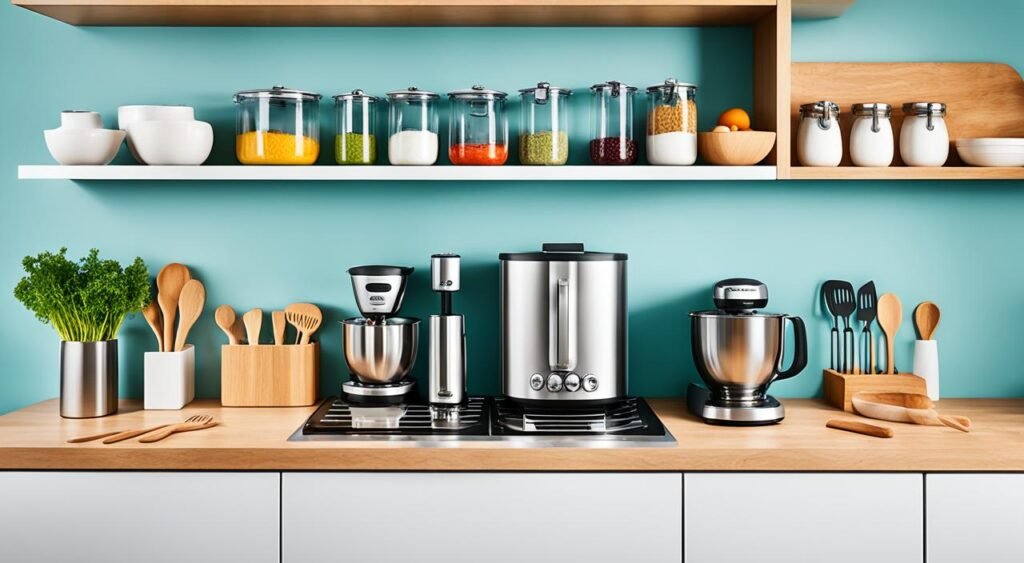
Avoiding Cross-Contamination When Dining Out
Eating out can be hard. Always tell the restaurant about your food allergies. Ask how they prepare their food. Be careful about shared fryers because gluten can spread to gluten-free foods.
Just a little gluten, 50 milligrams, can be harmful to those with celiac disease.
Educating Family and Friends
It’s important to teach your family and friends about cross-contamination. Show them why clean surfaces and utensils are key. Suggest using one dip for everyone to avoid gluten mix-ups.
Talking clearly about this can make eating safe at home and with others.
| Cross-Contamination Source | Prevention Strategy |
|---|---|
| Shared kitchen surfaces | Clean thoroughly before gluten-free food prep |
| Toasters | Use separate toaster for gluten-free bread |
| Cooking oils | Use fresh oil for gluten-free foods |
| Bulk bins at grocery stores | Choose packaged gluten-free alternatives |
Emotional Well-Being and Support
Living with celiac disease can be tough. We know it affects your emotional health too. Let’s look at ways to cope and find support.
Coping with Celiac Disease Challenges
Celiac disease isn’t just about food. It can make you feel sad, anxious, and tired. People with this disease are 1.8 times more likely to feel depressed. These feelings can stick around even after going gluten-free.
To deal with stress, try exercising regularly. It can make you feel better and give you more energy. Also, think about taking vitamin supplements to fix common nutrient gaps in celiac patients.
Finding Support Groups and Resources
It’s important to connect with others who get what you’re going through. Celiac disease support groups let you share stories, tips, and recipes. They offer a lot of emotional support.
Look for online communities or local groups to find these resources. The Gluten Intolerance Group is a great place to start. They offer lots of help and ways to meet others.
Dealing with Social and Emotional Impact
Celiac disease can make you feel alone. Following a gluten-free diet can make eating out hard. It’s okay to feel upset or overwhelmed sometimes.
If you’re finding it hard, think about talking to a health psychologist who focuses on gut issues. They can help you adjust and deal with your feelings. Cognitive behavioral therapy is also helpful for managing symptoms.
| Emotional Challenges | Coping Strategies |
|---|---|
| Depression and Anxiety | Seek professional help, join support groups |
| Social Isolation | Educate friends and family, find celiac-friendly social events |
| Stress from Dietary Changes | Learn new recipes, use meal planning apps |
| Financial Burden | Budget for gluten-free foods, explore affordable alternatives |
Conclusion
Living with celiac disease has its challenges, but you can still have a great life. We’ve looked at how to manage it and why it matters.
About 2 million Americans have celiac disease, with more women affected. A gluten-free diet helps, but people with celiac disease may still face hard times emotionally and socially.
We’ve covered a lot, from symptoms to social life with celiac disease. By trying new foods, staying updated on research, and getting support, we can beat challenges and stay healthy. More people knowing about celiac disease can also help reduce stigma and risks.
The gluten-free market is expected to grow to $14 billion by 2032. This growth means more choices and support for those with celiac disease. It makes living gluten-free easier and more fun.
I’m Dr. Shivani, a Kolkata-based nutritionist since 2015. After 10 years of igniting a love for healthy eating in young minds as a High School nutritionist teacher, I now help individuals unlock their full potential through personalized diet plans. My passion for writing and sharing nutrition knowledge (through blogs and observations) keeps my practice fresh and fuels my love for the field!



